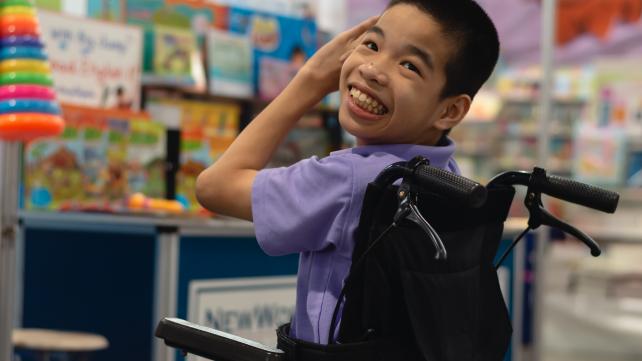
Starting a new school year in the midst of a pandemic can be stressful for anyone; starting a new school year in the midst of a pandemic with a learning disability can be even more difficult. Negotiating the transition to school with attention, memory, following directions, and social comprehension are even more challenging. Parents can minimize the stress by following a few simple steps.
1. Revisit your child’s IEP.
The IEP or Individualized Education Plan is a map that lays out the program of special education instruction, supports, and services kids need to make progress and thrive in school. The IEP is created through a team effort and reviewed at least once a year and, as a parent, you are an essential part of that team. Reviewing the plan can help you determine if any amendments need to be made before school begins and allows you to take the appropriate measures in doing so.
2. Share your own details (in writing).
Don’t count on the IEP to do all the heavy lifting. Create a one- to three-page overview of what teachers and service providers need to know about:
- your family structure
- your child’s likes and dislikes
- what sets her off and what calms her down
- what’s being done at home to work through anxieties and behaviors
- food allergies and other necessary medical information
- emergency contacts
- And for disabilities that aren’t widely recognized, include basic facts and a few helpful resources
Preparation of this summary has the additional benefit of reminding parents about areas that need continued attention at home.
3. Connect with your child’s lead teacher.
Then, talk with your child’s lead teacher to introduce yourself and your child and set some positive expectations. It is okay to share any concerns you have as a parent about beginning the new school year with the teacher. Give your child’s new teacher an overview of your child’s most recent challenges and achievements, and share the types of strategies that have been successful.
4. Sit down with your child to talk about what to expect.
Direct your attention to your child. Let them know what changes they can expect. Explain that there will be a new teacher to listen to, and that they will have to learn some new rules, but that everyone will be happy and proud of them for adapting to the new routine.
Once you have set expectations, you can also ease into the new year gradually by providing previews of the new classroom and school. Join school orientations or, if your child has social anxiety, try scheduling an individual tour. You can also ask your new teacher or principal for a picture book so your child can get familiar with new faces, rooms, and grounds. Previewing these changes will make the first days and weeks of school much less scary and jarring for a child with a learning disability.
5. Re-establish the daily routine.
Finally, get your child into a daily rhythm that simulates a school day. Start getting up at the same time you would normally get up to go to school. Establish a before- and after-school routine that you will be able to continue once school starts. You may even schedule study and playtime at the same time of day as the school does. Creating these routines will take some of the “unknown” elements out of the school day, help your child anticipate the sequence of events, and decrease anxiety. Social stories are also a great way to reinforce what to expect.
The key to a successful experience for our children lies in a school/home partnership. It goes a long way if you take the time to prepare, speak with teachers and providers, and let folks know you are an involved advocate who wants to work with the school to make the year as successful as possible.



Add new comment